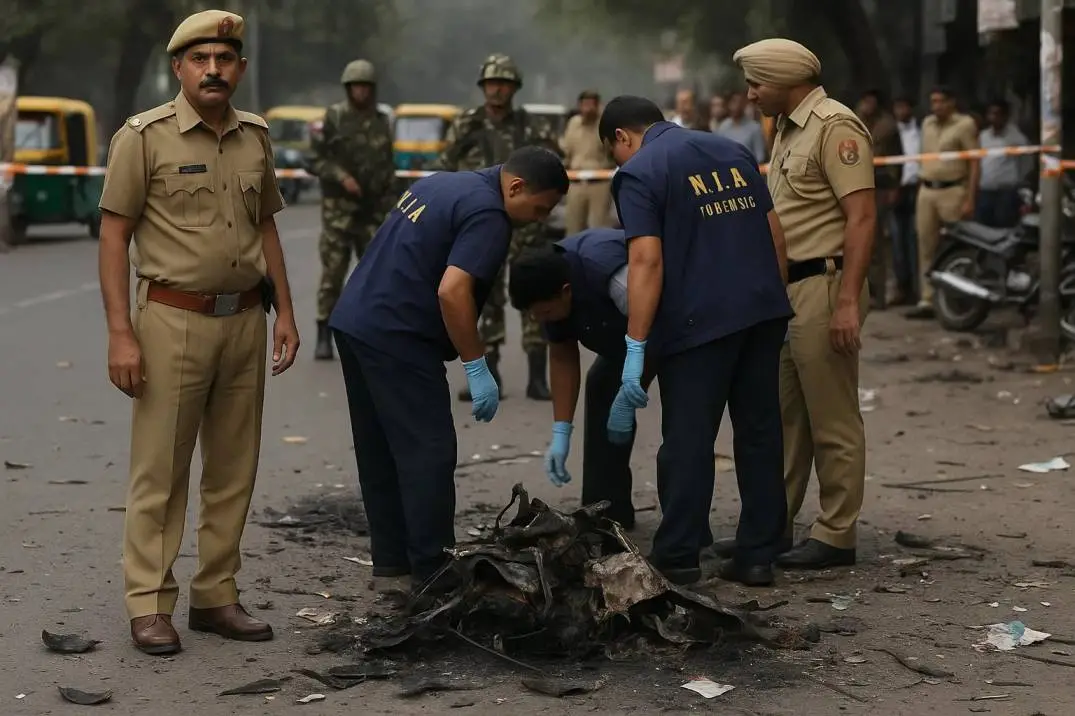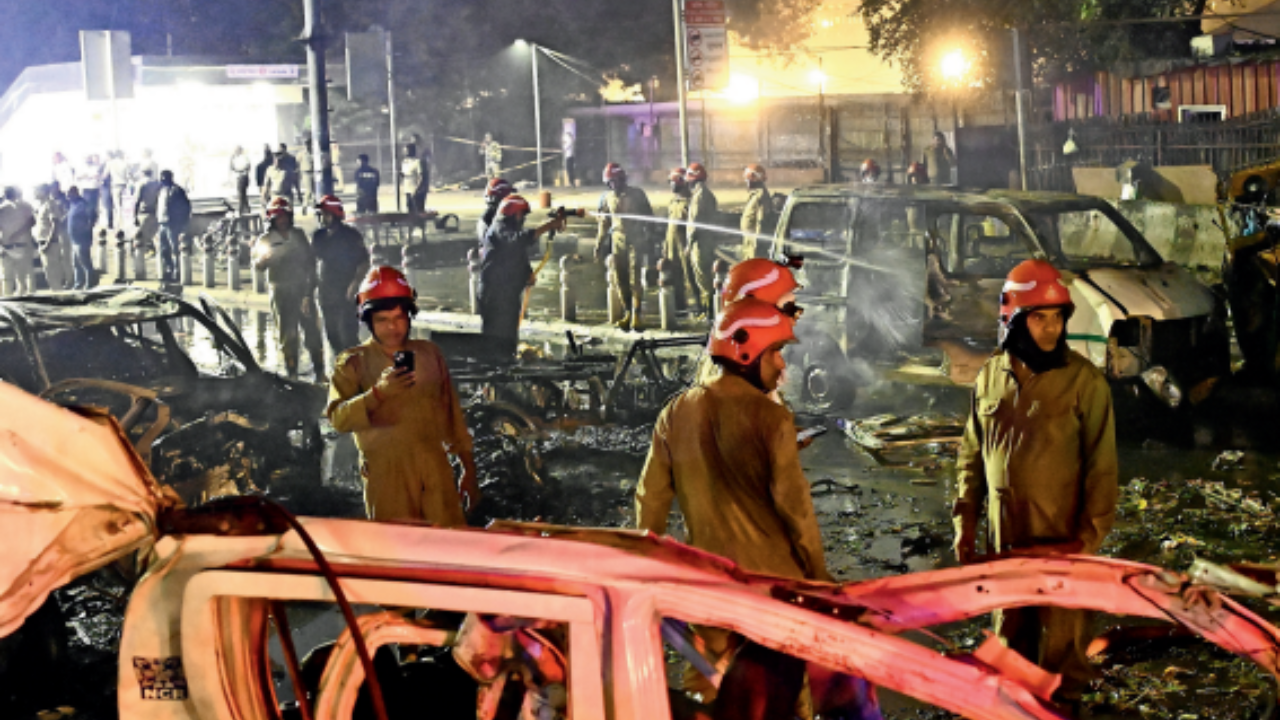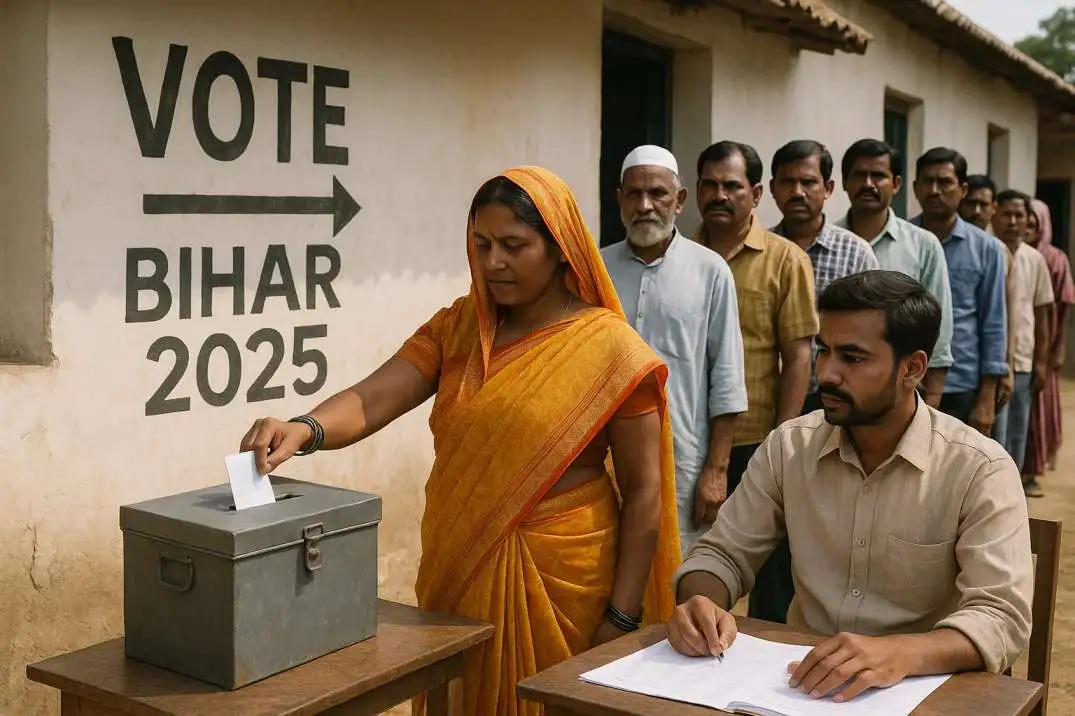
Delhi Red Fort Blast: Pakistan-Based Terror Network’s Deep Links in India Exposed
On the evening of 10 November 2025, a loud blast near Gate 1 of the Red Fort metro station in New Delhi rocked the city. The explosion from a slow-moving car suddenly killed at least eight people and injured 19 to 20 others. Despite that, as investigations continued, the number of fatalities increased. Some sources reported 12 or more deaths.
This attack is worrying. More evidence shows that a terrorist group from Pakistan is linked to the explosion. It also connects to networks operating within India and across borders. Here’s a deeper look at what we know so far: the incident, its implications, the suspected fear network, and what’s next for Indian security.
Delhi Red Fort Blast 2025: What Happened?
Around 6:50–7:00 pm, a Hyundai i20 reportedly stopped at a red light near the Ruddy Post metro station. The car at that point detonated, intensely harming itself and nearby vehicles.

The blast sparked quick fires. Many vehicles caught fire, and reports showed body parts and shrapnel scattered around. This indicated a high-energy impact, not a simple accident. Following the explosion:
- Emergency administrations (fire, ambulance, explosives squads) quickly responded.
- The region around the Red fort was cordoned off. The metro station and major courses adjacent were closed.
- Security groups applied the strict Illegal Exercises (Anticipation) Act (UAPA) and the Dangerous Substances Act while investigating.
- As many reports state, such a high‐fatality impact in the national capital is the to begin with of its kind since 2011.
In short: a huge explosion at a common spot, many casualties, and a swift response by experts treating it as a terror act.
Why the Red Fort? The Symbolic Significance
The Red Fort is one of India’s most famous landmarks. It’s a UNESCO World Heritage site, a symbol of Indian power, and the place where the Prime Minister speaks to the nation on Independence Day each year. Attacking such a site has many implications:
Visibility: The event was held near a popular spot and a busy metro station. This helped attract lots of media coverage and public interest.
Psychological impact: Targeting the capital's significant center conveys a sense of powerlessness and tests the security measures of the authorities.
Symbolic countering: Due to ongoing India-Pakistan tensions, this area strengthens messages from major groups, particularly those connected to Pakistan.
Thus, this occurrence isn’t fair; another explosion—it hits at both foundation and national morale.
Uncovering the Terror Footprint: Pakistan-Based Links

Emerging leads
Investigators are looking into a suspected connection between the impact and the Pakistan-based terror group Jaish-e-Mohammed (JeM).
Read Also: IMD Issues Alert as Cyclone Montha Brings Heavy Rain
Intelligence agencies believe a quick cause involves an Indian group, called a “white-collar fear module.” This group connects to recent arrests of agents and professionals in the Delhi/Haryana area.
Details of the network:
Nearly 2,900 kg of explosives was seized from a cell in Haryana’s Faridabad district fair some time recently the blast.
The car involved in the crash was reportedly linked to an expert from Pulwama in South Kashmir. This raises concerns about connections between J&K agents and terror groups in the NCR (National Capital Region).
What this all suggests.
Pakistan-based groups build resources, reserves, and manpower across borders. They operate in India through sleeper cells or local networks.
The authorities used terrorism laws and set high alert levels for borders and travel. This shows they believe the group is involved in previous domestic crimes.
The timing is important. The blast happens during rising tensions between India and Pakistan. This follows India’s “Operation Sindoor” in May 2025. There were also earlier warnings about possible attacks by groups based in Pakistan.
A terror network backed by Pakistan appears to have carried out or tried to carry out an attack in the national capital, using local resources.
Broader Implications: India’s Security Landscape
National Capital vulnerability: Delhi hasn’t seen a major impact of this size since 2011. The assault signals unused strategies or resurgence: tall casualty, open space, typical target.
Cross-border dimensions: This event, linked to fear groups in Pakistan, raises questions about state and non-state artist connections. Pakistan denies its obligations, but India might see this as a sign of hostility. This could have important diplomatic and military effects.
Internal terror networks: The part of Indian modules proposes that the issue is not fair outside invasion but inside enrollment and infrastructure. This complicates counter-terror endeavors significantly.
Impact on civilian life & economy: Explosions in crowded areas cause fear. They disrupt transportation, hurt trade, and strain crisis support. Post-blast, Delhi and the NCR locale increased security, causing bother and costs.
Border and transit security: After the impact, India increased border checks with Pakistan, Nepal, and Bangladesh. They boosted travel checkpoints, patrols, and screening systems.
Who Are the Suspects? What Do We Know?
No fear gather has formally claimed an obligation, yet. Examinations are still ongoing.
Yet, the doubt falls on JeM. The gather is known for high-profile attacks in India. Many countries label it a terrorist group. It is based in Pakistan’s Punjab region.
The “white-collar” module in NCR/Haryana includes experts. They manage logistics, finance, and vehicle procurement. Some may have also handled hazardous materials. They are not just “amateurs on the ground.”
The legal evidence (shrapnel, vehicle debris, and unusual impact distance) suggests a new device, not an accidental car fire.
What’s Next: The Investigation & India’s Response
The case is now with the National Examination Organization (NIA). They will coordinate with the National Security Guard (NSG) and the Delhi Police.
Authorities are tracking several things. They are examining CCTV footage, looking into vehicle registration records, and running forensic checks for hazardous materials. They are also examining bank and finance routes to find links to terror funding.
If Pakistan-based dread is confirmed, India might bring it up in meetings. They could also take action at the border or on the international stage.
Look for increased security at metro stations, busy public spots, key landmarks, and historic sites. Open sharpness and watchfulness are being emphasized.
The government has also warned local communities to stay calm. They should be alert for “unclaimed objects or people” and report any suspicious activity.
Final Thoughts
The impact close to the Red Fort is more than a awful incident—it underscores the advancing danger to India’s heartland. A symbol-rich area is now linked to a new fear module connecting Pakistan and India. This shows that the counter-terror challenge is getting more complex.
- For India, the suggestions are important.
- Defend famous landmarks.
- Strengthen local and cross-border intelligence.
- Disrupt local terror networks.
- Maintain public trust.
For citizens, this moment highlights feelings of helplessness. It also shows the importance of being watchful, staying united, and supporting responders who work to keep us safe.
As exams continue, one thing is clear: we quickly identify the culprits. The modules are destroyed, which helps prevent another bad event. The city of Delhi and all India merit nothing less.








